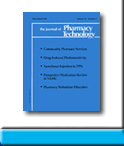 |
 |
Overview of the Pharmacologic Options for Rosacea
Marisel Segarra-Newnham and Sahar Karimi
To request full article click here.
OBJECTIVE: To review available therapies for rosacea.
Data Sources: A PubMed literature search (1985–July 2009) was conducted. Search terms included rosacea, antibiotics, and treatment.
Study Selection and Data Extraction: English-language reviews, comparative clinical trials, and guidelines for treatment of rosacea were reviewed. Seven comparative trials were identified.
Data Synthesis: Rosacea is a common dermatologic disease that affects about 10% of the adult population, usually before age 50. The etiology of the disease is unknown. There are 4 subtypes of rosacea: erythematotelangiectatic (frequent flushing and redness), papulopustular (early telangiectasias, classic rosacea), phymatous (thickened skin with prominent pores), and ocular. Severity of each subtype is classified as mild, moderate, or severe. The goal of therapy is symptomatic control versus cure. For papulopustular rosacea, topical metronidazole is the first line of therapy. Azelaic acid is a newer preparation that patients have preferred over topical metronidazole in head-to-head trials. Topical sodium sulfacetamide/sulfur is another alternative. Systemic agents may be needed for nonresponders or patients with severe disease. Oral alternatives include a 40-mg dose of doxycycline, which costs significantly more than generic doxycycline 100 mg. The lowest effective oral dose should be used to reduce the possibility of bacterial resistance. Telangiectasias may require laser surgery.
Conclusions: Several alternatives are available for the treatment of rosacea, depending on the subtype, severity of disease, and patient response. In addition to pharmacologic therapy, patients with rosacea need to be counseled about identification and avoidance of triggers that can exacerbate their symptoms, the use of broad-spectrum sunscreens, and the use of mild cleansers.
J Pharm Technol 2009;25:368-73.
ACPE Universal Program Number:
407-000-09-057-H01-P (Pharmacists)
407-000-09-057-H01-T (Technicians)
To request full article click here.
|
|
|
||
|

